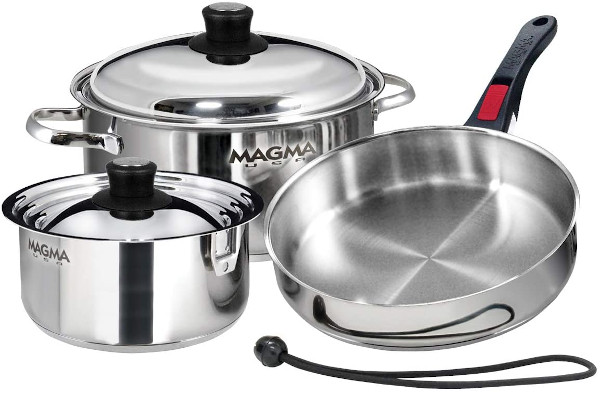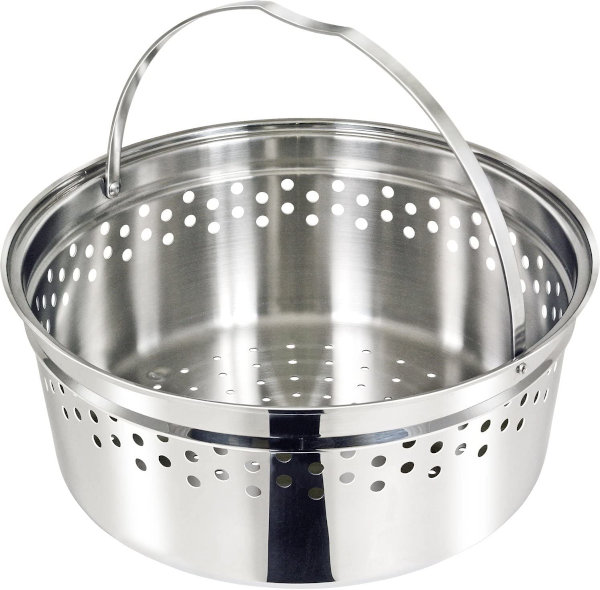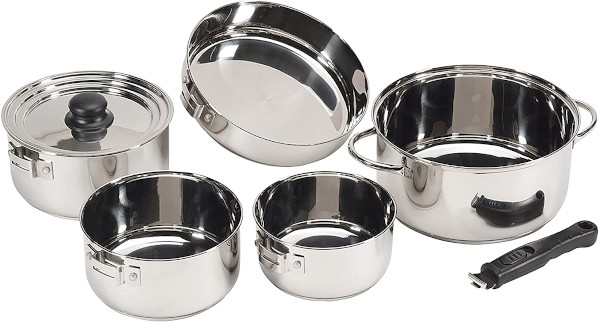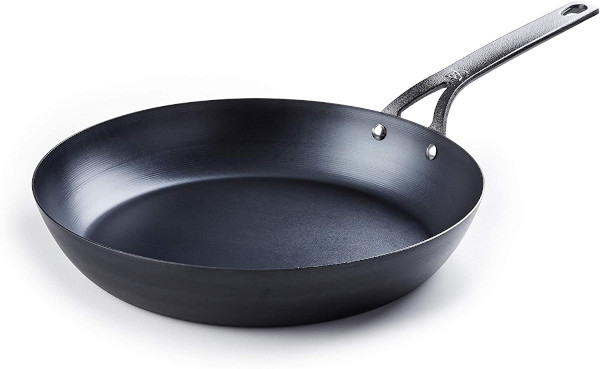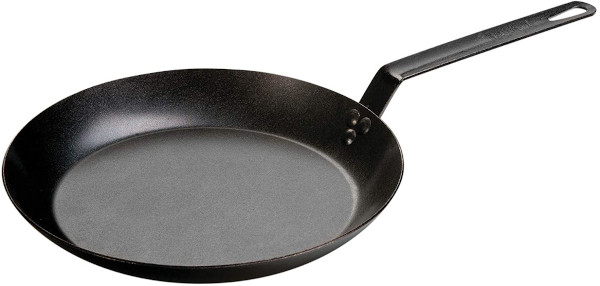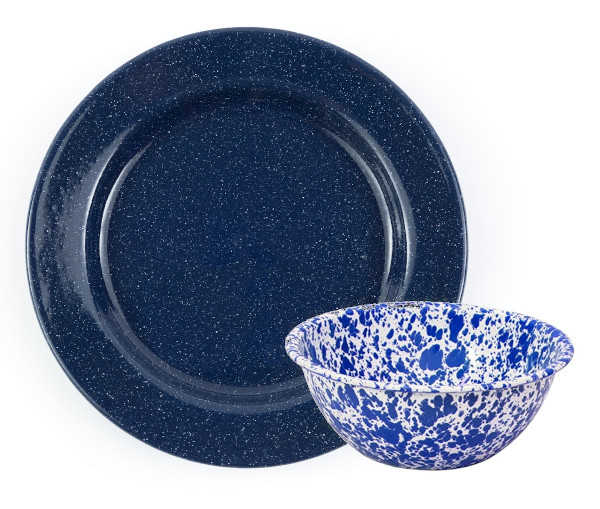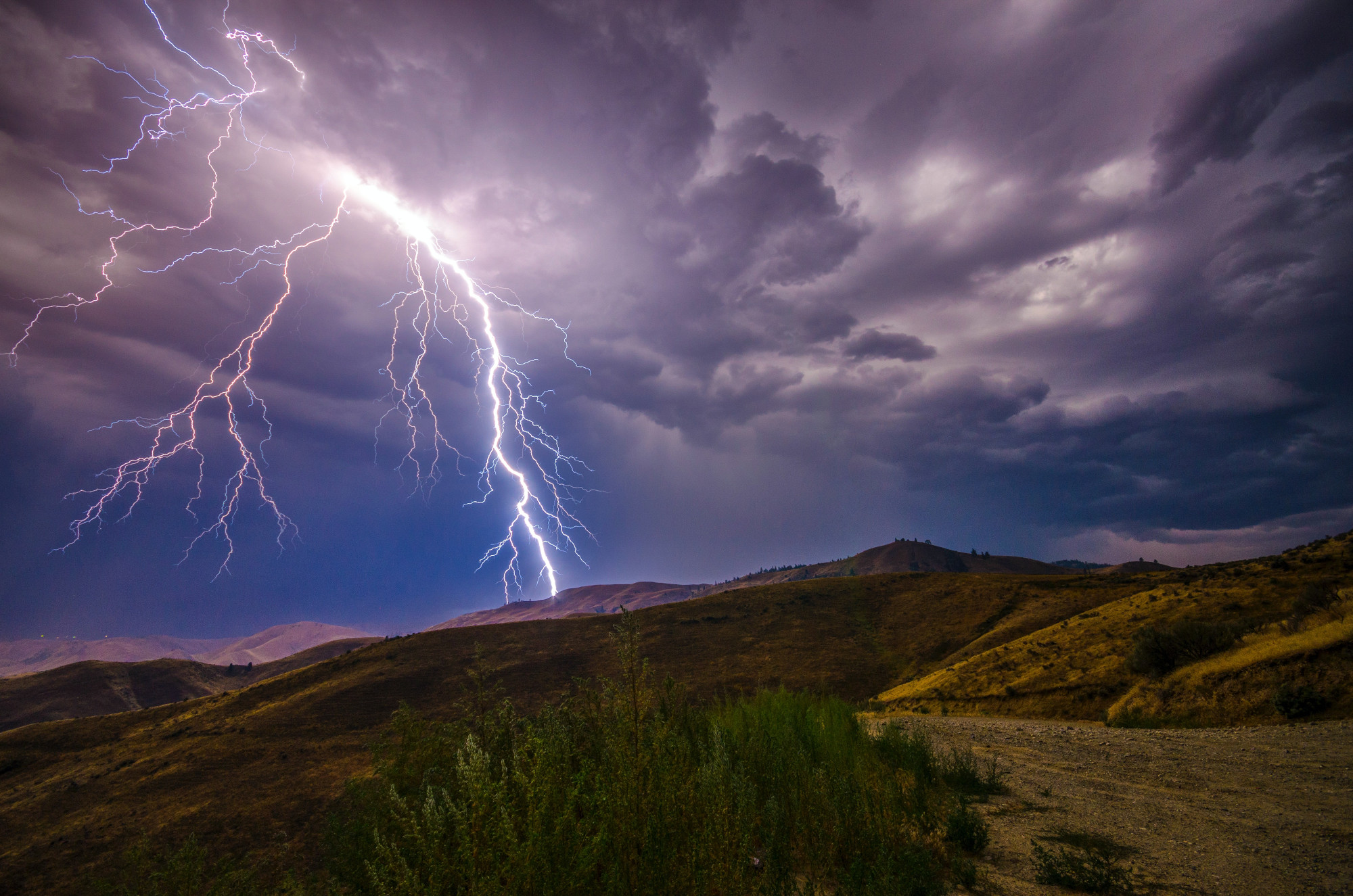The best surge protector and EMS
For most owners of Class B camper vans I recommend the Hughes 30 Amp Bluetooth Surge Protector with Auto Shutoff. Another good choice is the Progressive EMS-PT30X. For vans with the Volta Lithium system, a standard surge protector such as the Progressive Industries SSP-30XL may be a better choice (see our Lithium discussion below).
Van power
Most class B vans have 2 electrical systems. One is commonly 12 volt and runs off of a bank of batteries. The other is commonly 120 volts AC (the same as house current) and runs off of a glorified extension cord connected to an outlet that supplies power to your van. This is called shore power. (The term originally applied to the electrical system that supplied power to docked boats.) At a campground, shore power is typically provided by an electrical pedestal that has different shaped outlets for 30 amp and 50 amp service as well as a switch (circuit breaker) to turn the power on. A Class B van typically uses 30 amp service. WIthout going into the weeds, an amp is, very roughly, how much energy you are using. For example, a typical RV air conditioner uses around 10 amps and a microwave another 10. When you are running both at the same time you are using 20 amps. Since you are using a 30 amp service, the total of everything you are concurrently using in your van must be under 30. Bigger RVs, such as Class As, have larger energy needs and typically have a 50 amp service.
Background
In your house, you connect devices directly to your outlets. You plug in a floor lamp or a cell phone charging cable. However, instead of directly plugging a device into a wall socket, many people protect their expensive televisions, computers, and audio systems by using a surge protector. As the name suggests a surge protector protects against surges, or power spikes. A spike is a temporary increase in voltage above what is normal. These spikes can come from lightning strikes, the power company, or even devices within your home. Normally, your house is supplying 120 volts to your devices but when a surge occurs, it may deliver a 1,000 or 5,000 volt spike. What can happen without a surge protector? In a demonstration reported on in this wirecutter article, they sent a 5,000 volt spike to a Dell LCD monitor protected by a surge protector. The monitor worked fine after the spike. When they repeated the test with the surge protector absent, the monitor was destroyed “never to be turned on again.” You can imagine how bummed you would be if your $2,000 OLED 4K television was destroyed by a surge when you could have protected it with a $40 device. Now imagine how bummed you’d be if the electrical system of your $200,000 van was fried by a surge. Hopefully, this avoidance of possible future suffering will convince you to tolerate the immediate slight pain of buying an expensive (~$200) surge protector that does not make your average van trip any more wonderful. Also, remember that a surge protector only protects the van when connected to shore power. There is no need to use a protector if you are on battery power.
The measure of how much protection a particular surge protector provides is called a joule. A joule rating is a measure of how much energy can be absorbed by the surge protector before it fails. Everytime your surge protector absorbs energy, it uses up joules. Eventually, after doing its job and absorbing surges, the surge protector is used up. The average lifespan of a home surge protector is three to five years.
Electrical Management Systems (EMSs)
Surge protectors only protect against voltage surges–when the voltage exceeds the limits of your device. They don’t protect against brownouts which is a decrease in voltage below the normal level. Not that long ago I lived in an apartment in Northern Virginia, whose lights would dim when the fan for my apartment heat would come on and also dim when my laser printer started up. So I invested in a system that protects against both occurrences. Anyone who crucially depends on their devices working should protect their gear. For example, in advice given to musicians Ikes Taylor writes “Never plug anything straight into the house electrical system, other than your power conditioner. Remember, you may be on the same circuit as the bar refrigerators.”
In a van, or for that matter any RV, if either a voltage spike or brownout occurs there could be damage to the components in your rig. Here are a few actual reports:
“We were in Mobile, Alabama during Hurricane Lee. The RV park power was hit by lightning and we had a MAJOR power surge melting our 50amp power line and burning the 12VDC and 110 VAC wiring in the coach–2007 Pace Arrow–as well as ‘doing in’ all the electrical appliances and controls.”. Roger Allen Phoenix USA RV.
“Two weeks ago I posted a note regarding the 220 volt power surge that occured at Tampa East RV park due to the parks faulty underground wires. The spontaneous power surge caused damage to several RV’s in the park. Ours was one of them. We lost our main AC, our microwave, a bedroom television and a convertor.” –RN Enigma
I don’t want to stress you out by suggesting that it is inevitable that you will experience one of these conditions. Having your van damaged by surges and brownouts is extremely rare. That said, a house fire is rare but we protect ourselves with smoke detectors so it might be wise to protect your van from these electrical anomalies.
While a surge protector only protects against surges, an Electrical Management System (EMS) protects against surges, brownouts, and other anomalies. What are some other anomalies? Some electrical pedestals in campgrounds may not have been set up or maintained by professional certified electricians, or even competent amateur ones and in non-technical language, the wiring may be messed up. For example, in one condition known as reverse polarity, wires are swapped. The electrical systems in your van would work normally but metal surfaces of your van, including exterior surfaces, could be energized which could cause a potentially lethal shock hazard (on the good news front, all RVs manufactured after 2020 are required to have reverse polarity protection). Yet another way of getting a lethal shock is through an open ground. In household plugs the third rounded part of the plug is the ground. For example, if your toaster has an exposed wire, this ground prevents you from getting shocked. An open ground is when the ground part of an outlet is actually not connected and it doesn’t provide this protection. Again, such events are extremely unlikely.
General Information about an EMS
All the recommended Electrical Management Systems (EMSs) below offer protection against these hazards. Keep in mind that some advanced Lithium systems, such as Winnebago’s Volta system, are not compatible with EMSs and for those it is recommended that you use a standard surge protector, which we describe further below.
All the units are surprisingly large–about the size of a yoga block, weigh around 4-5 pounds and cost around $200-$250. Each model comes in several configurations. You can get a 30 amp version or the 50 amp. Again, all the Class B vans that I am aware of are 30 amp but please check your manual. You can also get either the portable or hardwired version of these devices. The hardwired version is one that is directly wired to your van’s electrical system and it requires a bit of electrical prowess (or knowing someone who does). The portable version is similar to surge protectors for your house. You plug one end into the plug on the power pedestal, dangle the EMS unit downward, and plug the other end into your van’s power cord. People typically get the portable version. The EMS is both an analyzer and a protector and the steps of using a portable unit reflect this. This is the typical pattern (please consult your EMS/Surge Protector manual for details).
- Make sure the breaker (the power switch) on the pedestal is in the off position.
- Plug in your EMS
- Wait for the EMS to analyze the power (depending on the EMS this could take from a few seconds to a few minutes).
- If the EMS detects a problem, do not plug in your van, instead, report the problem to the park manager.
- If the EMS says everything is good, move the breaker to the off position.
- Plug in the power cord from your van into the EMS, and switch the breaker to ON.
- Now you can use the electrical devices in your van while the EMS is providing protection.
The key point here is that you first plug in the EMS to the pedestal without having your van connected. Only when the EMS says that the power is good, do you plug in your van.
My Pick - The Hughes Power Watchdog + EPO
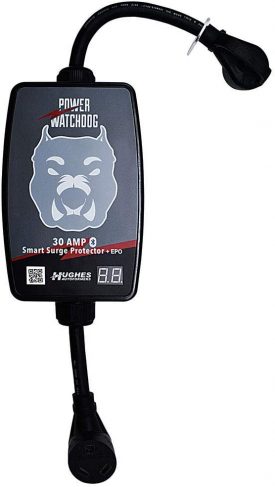
30 Amp (for vans)
Hughes PWD30-EPO Power Watchdog Plus EPO with Auto Shutoff – 30 Amp Portable Version
Hughes PWD30-EPO-H Power Watchdog Plus EPO with Auto Shutoff – 30 Amp Hardwired Version (requires installation)
50 Amp (for larger RVs)
Hughes PWD50-EPO Watchdog Plus EPO with Auto Shutoff – 50 Amp Portable Version
Hughes PWD50-EPO-H Power Watchdog Plus EPO with Auto Shutoff – 50 Amp Hardwired Version (requires installation)
The EMS I recommend is the Hughes Hughes Power Watchdog + EPO. It was introduced in 2019 and won second place in the RV Industry Association’s Aftermarket Product of the Year Award. One thing that sets it apart from others is its IP65 waterproof rating. As you may have learned from shopping for a rain parka, the term ‘waterproof’ can mean different things and the IP rating is an industry standard measure for electrical devices. The IP65 rating makes the Hughes similar to outdoor street lights and it can survive being out in severe thunderstorms (a good thing since one of its primary jobs is to protect against lightning strikes). In comparison, the new iPhones have an IP68 rating meaning they can survive being under 13 feet for 30 minutes. This Hughes is not rated to sit in a pool of water. In fact, all surge protectors and EMSs are designed to hang from the power pedestal and not lay on the ground and be susceptible to puddles.
The other novel feature of the Hughes is that it has Bluetooth connectivity and a companion iPhone/Android app. This app provides detailed information about power including the energy consumption of your van. Finally, this unit features a replaceable surge module. Recall the surge protectors can get ‘used up’ and when this happens to other brands, you need to replace the entire unit. With the Hughes unit, if the surge component gets used up you just replace a $20 module.
The startup time is also faster. The startup time of some other brands exceeds two minutes whereas the startup time on the Hughes is 4 seconds!
The other features are comparable to other EMSs listed here. It protects against surges, high and low voltage, open ground and reverse polarity. The surge protector component is rated at 2,400 joules.
The one drawback this unit has is it only has a 3 year warranty when other brands feature a lifetime warranty.
Also Good - Progressive EMS-PT30X

30 Amp (for vans)
Progressive EMS-PT30X – 30 Amp Portable Version
Hardwired EMS-LCHW30 RV Surge & Electrical Protector with Integrated Display – 30 Amp Version (requires installation)
Hardwired EMS-HW30C RV Surge & Electrical Protector with Remote Display – 30 Amp Version (requires installation)
50 Amp (for larger RVs)
Progressive EMS-PT50X – 50 Amp Portable Version
Hardwired EMS-LCHW50 RV Surge and Electrical Protector with Integrated Display – 50 Amp Version (requires installation)
Hardwired EMS-HW50C RV Surge & Electrical Protector with Remote Display – 50 Amp Version (requires installation)
The Progressive EMS-PT30X has long been considered the gold standard of surge protectors and is by far the most commonly mentioned EMS in various RV forums. A big plus to this unit is its lifetime warranty and a number of people have mentioned this in their forum posts. Their EMS-PT30X would go bad, they would call customer service, who would ship out a new unit. Unfortunately there are an equal number of people that express difficulty in reaching the 24/7 customer service hotline.
It offers the same basic protections as the Hughes. Its surge protector component is rated at 1,790 and its startup time is 136 seconds.
The main reason this isn’t my top pick, is that numerous people in various forums and on Amazon report water intrusion into the unit. For example, one person on the Airstream forum writes “Our Progressive Industries EMS-PT50X quit working after a storm yesterday and I realized it was full of water!” and a user in the Forest River forum says “So upon inspection my unit was full of water. More than a cup, and it really didn’t rain that hard. These units are not water tight as represented.” Many of the people who had water damage received a new unit under the lifetime warranty, but some did not.
Even with this defect it is perhaps the most recommended in the Class B forums..
Runner Up - Southwire 34930 Surge Guard 30 amp
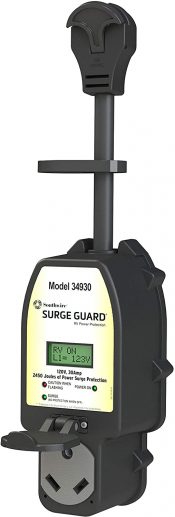
While not as full-featured as the Hughes, a solid choice would be the Southwire Surge Guard. The protection it offers is similar to both the Hughes and Progressive. Like the Progressive, the manufacturer states that it is weather resistant but some owners report water intrusion. At one time they were the budget pick for good EMSs, but now their price seems comparable to the others. Unless you can get the Southwire for a greatly reduced price, the Hughes or the Progressive are better options.
Winnebago Pure3 Volta Lithium Systems
There are rare reports of problems with using an EMS unit with the Volta Lithium System found on some Winnebago vans. The Volta system already checks for conditions like open ground and over/under current and some users report problems with connecting the Progressive EMS-PT30x to the van and the problems are resolved when using a standard, non-EMS, surge protector. I have not seen reports of problems with other lithium based systems and most people still recommend the more comprehensive EMS units. If you are worried about compatibility, the following non-EMS surge protectors are recommended.
Photo at head of article by Frank Cone from Pexels

